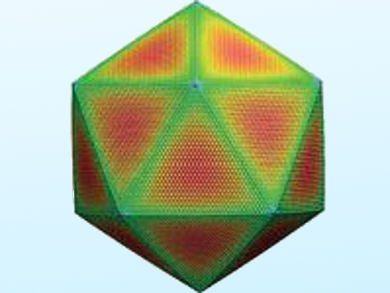The electrochemical reduction of carbon dioxide into value-added fuels and chemical feedstocks is promising for reducing both climate issues and the energy crisis. However, the rational design of highly active electrocatalysts for this reaction is hampered by a limited understanding of structure-property correlations with CO2.
Jie Zeng, Jinlong Yang, and colleagues, University of Science and Technology of China, Hefei, found that surface strain can regulate electrochemical reduction of carbon dioxide. Palladium nanocrystals (pictured) with different degrees of surface strain were investigated. The researchers found that the palladium nanocrystals with tensile surface strain showed much higher catalytic activity with respect to those with negligible surface strain.
Based on theoretical calculations and electrochemical analysis, the tensile strain on the surface of palladium nanocrystals was demonstrated to boost the catalytic activity by shifting the d-band center and thus strengthening the adsorption of key intermediates. The findings provide an understanding of the strain effect in the electrochemical reduction of carbon dioxide and offers a way to optimize the catalytic activity.
- Understanding of Strain Effect in Electrochemical Reduction of CO2: Using Pd Nanostructures as an Ideal Platform,
Hongwen Huang, Huanhuan Jia, Zhao Liu, Pengfei Gao, Jiangtao Zhao, Zhenlin Luo, Jinlong Yang, Jie Zeng,
Angew. Chem. Int. Ed. 2017.
DOI: 10.1002/anie.201612617



